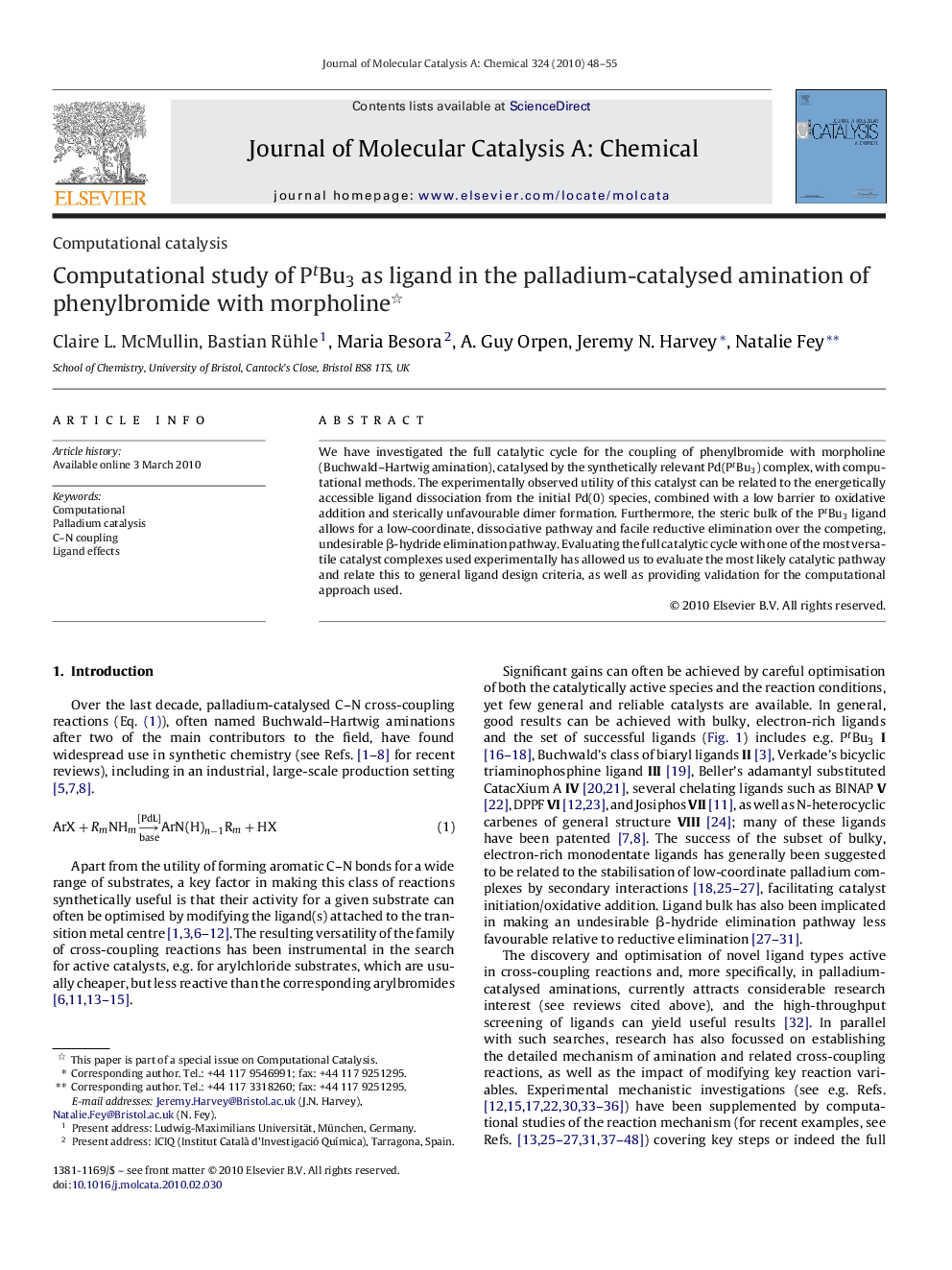| کد مقاله | کد نشریه | سال انتشار | مقاله انگلیسی | نسخه تمام متن |
|---|---|---|---|---|
| 66765 | 48449 | 2010 | 8 صفحه PDF | دانلود رایگان |

We have investigated the full catalytic cycle for the coupling of phenylbromide with morpholine (Buchwald–Hartwig amination), catalysed by the synthetically relevant Pd(PtBu3) complex, with computational methods. The experimentally observed utility of this catalyst can be related to the energetically accessible ligand dissociation from the initial Pd(0) species, combined with a low barrier to oxidative addition and sterically unfavourable dimer formation. Furthermore, the steric bulk of the PtBu3 ligand allows for a low-coordinate, dissociative pathway and facile reductive elimination over the competing, undesirable β-hydride elimination pathway. Evaluating the full catalytic cycle with one of the most versatile catalyst complexes used experimentally has allowed us to evaluate the most likely catalytic pathway and relate this to general ligand design criteria, as well as providing validation for the computational approach used.
Computational study of the full catalytic cycle for the coupling of phenylbromide with morpholine (amination), catalysed by Pd(PtBu3) complex, related to ligand design criteria.Figure optionsDownload high-quality image (131 K)Download as PowerPoint slide
Journal: Journal of Molecular Catalysis A: Chemical - Volume 324, Issues 1–2, 1 June 2010, Pages 48–55